Newsletter #36, May 2015
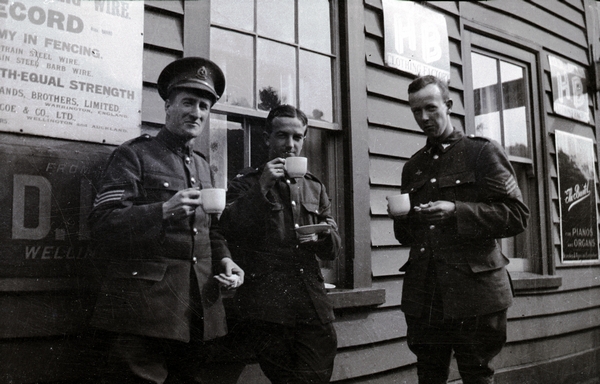
Looking back: In 1917, during World War I, Sergeant Norman Shepherd (right) and two other sergeants stand outside Kaitoke station building, taking refreshments during a break in their train journey over the Rimutaka Incline.
Photo: Masterton and District Libarary and Archive, Item from Collection: Shepherd, Norman : collection (13-156). masterton.spydus.co.nz/cgi-bin/spydus.exe/ENQ/OPAC/ARCENQ?RNI=654240
In this issue
The Trust is fortunate in being one of a select number of charities that are listed with Recycling for Charity, a service which recycles computer hardware. A percentage of the profit made by recycling computers goes to a charity of your choice. If you or your business has computers to dispose of then contact the Trust or Recycling for charity, and nominate the Rimutaka Incline Railway to receive the donation.
Back to top
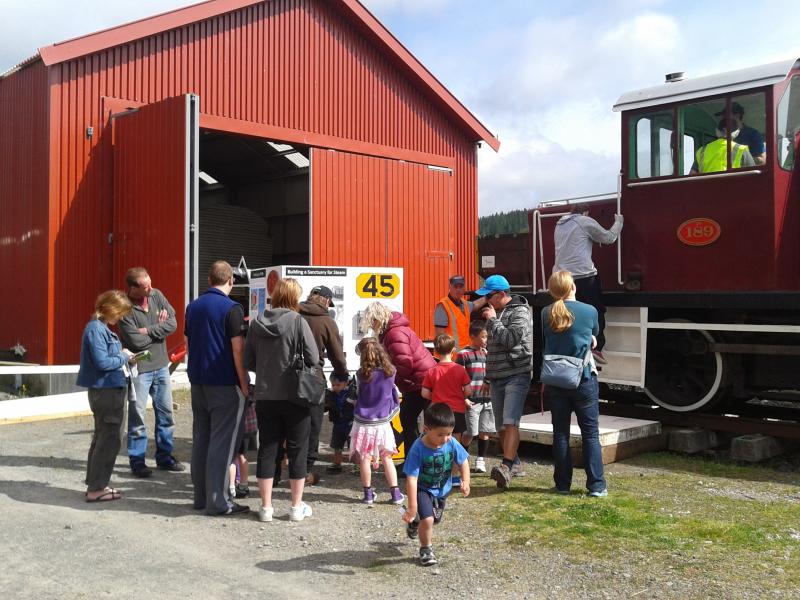
People lining up for a cab ride in Tr 189 on 6 October 2013.
We now operate trains at Maymorn on the second Sunday of each month, 10am-4pm.
Our next three train running days are:
Sunday 12 April 2015, Sunday 10 May 2015 and Sunday 14 June 2015.
Please help us publicise the train running days amongst friends, family, workmates, local noticeboards and such like. We are keen to boost the numbers attending and every bit of publicity helps.
Back to top
Diesel locomotive welcome addition to railway
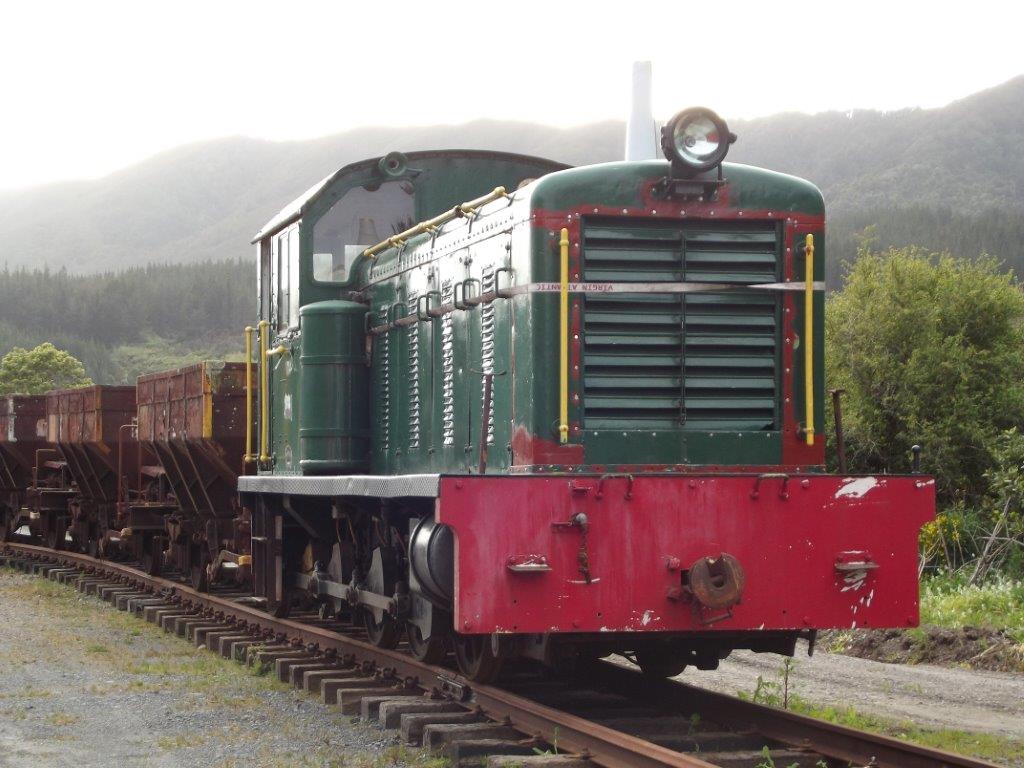
ex-Ohai Railway Board locomotive No.1 arrives at Maymorn.Photo: Ben Calcott.
On Tuesday 21st October we took delivery of ex-Ohai Railway Board locomotive No.1 at our Maymorn railway heritage site.
The locomotive was built by Drewry/Vulcan in 1947 for the Ohai Railway Board and along with being used on coal trains was used on some of the first diesel locomotive hauled passenger trains in New Zealand.
This locomotive will provide the Trust with a level of redundancy when major work is required on their current locomotive Tr189 as well as forming a key role in future railway construction, passenger operations and shunting work as the railway extends from Maymorn.
The Trust plans to begin restoration in the near future to return the locomotive to service and welcome new volunteers that wish to be involved.
The public are invited to come and view the locomotive and its restoration progress on the Trusts regular open days held on the second Sunday of every month.
The Trust would like to thank Bruce McLuckie, Porter Heavy Haulage and all the volunteers involved in the purchase and move.
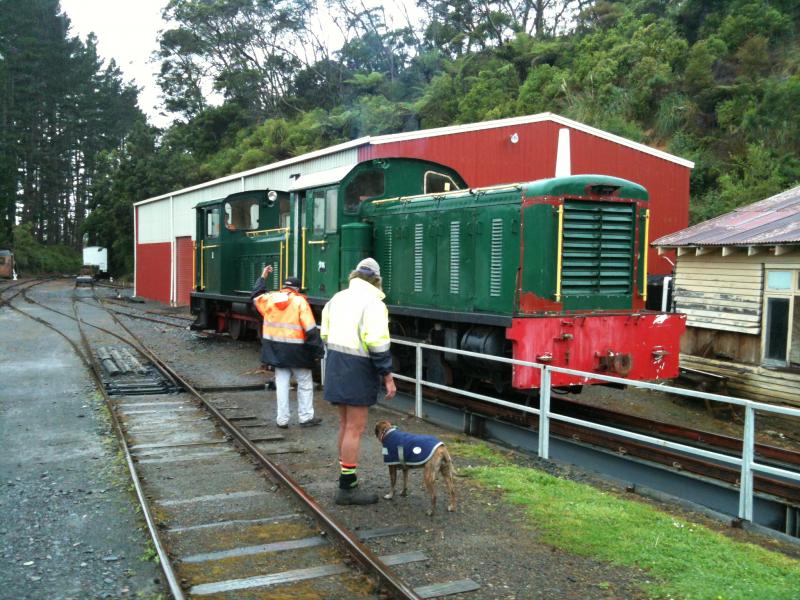
ORB No 1 over the pits at Pukemiro for inspection before loading. Photo: Hugh McCracken
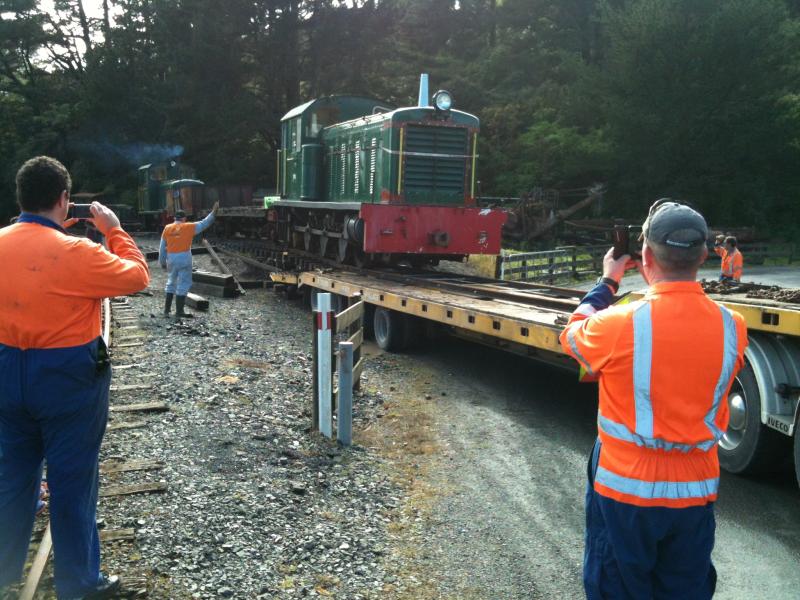
Loading the loco on Sunday 19th October onto a Porter Heavy Haulage low loader. Photo: Hugh McCracken.
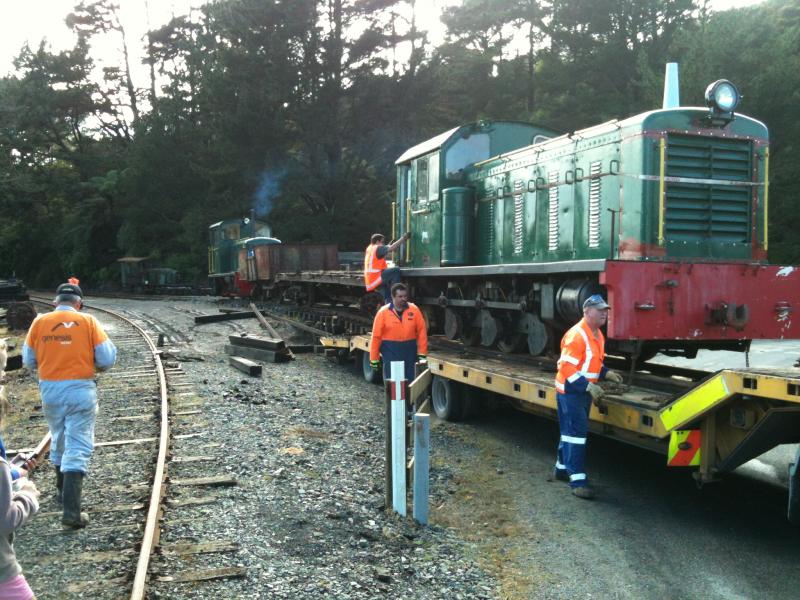
Loading the loco on Sunday 19th October onto a Porter Heavy Haulage low loader. Photo: Hugh McCracken.
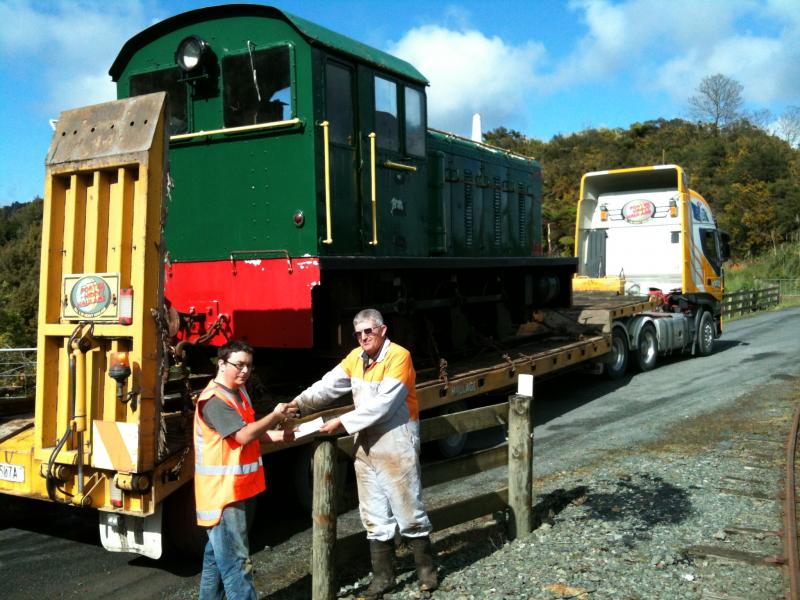
Official handover of the locomotive once safely loaded onto the truck - Trust Chairperson Ben Calcott hands cheque to Bruce McLuckie. Photo: Hugh McCracken.
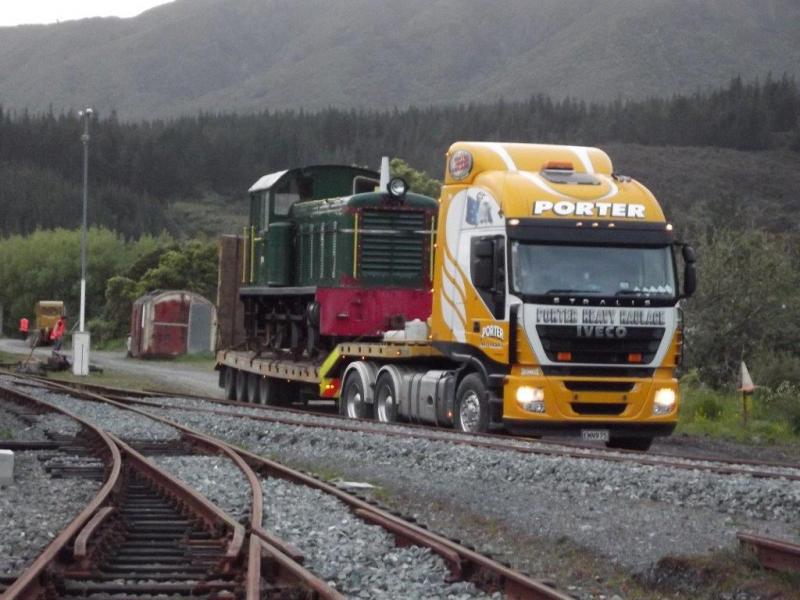
ORB-1 arrives at Maymorn on the Porter Heavy Haulage low loader, Tuesday 21st October. Photo: Glenn Fitzgerald
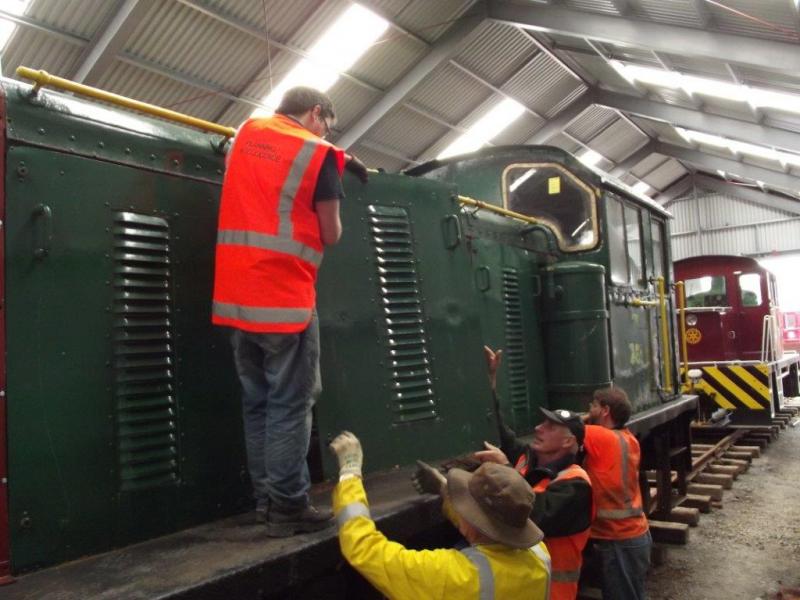
Trust members checking over the locomotive, safely stored inside the rail vehicle shed. Photo: Glenn Fitzgerald.
Fundraising
To date the Trust has raised $8,000 towards the cost of purchase, transport and repair of the locomotive - further funds are needed to repair and return the loco to operation.
Donations towards the locomotive can be made at givealittle.co.nz/cause/orb1 or contact enquiries@rimutaka-incline-railway.org.nz.
Project: Shunting Loco ORB No.1
Since the loco arrived at Maymorn the long hood panels and air receivers have been removed as the underlying frame is badly corroded. Replacement of many of the frame struts is planned. The fuel tank will also be lifted out of the long hood frame, once fuel has been drained. Brake system components and piping are also receiving attention.
Back to top
Gumdigger carriage project
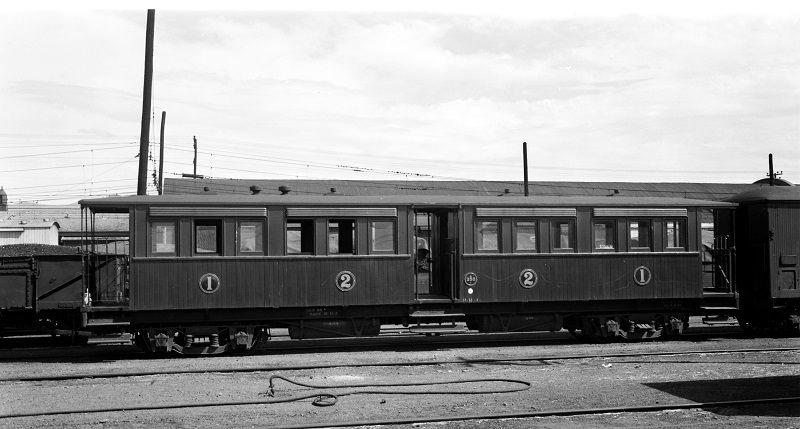
Gumdigger carriage A255 at Christchurch on 27 January 1950, near the end of its revenue-earning service. Photo: JAT Terry.
Further major components required for our 1880s Gumdigger Carriage restoration project have been made available to the Rimutaka Incline Railway, and approximately ($4,000) is required to fund their transport from Dunedin to Upper Hutt.
In 2008 Wayne Haste donated a number of key components from carriage A189 along with an underframe – the start point for the project. The Trust stored these components for eventual use in a rebuilt Gumdigger carriage, pending completion of its storage and workshop facilities at Maymorn.
In late 2014 the Trust was offered one half of another Gumdigger carriage body - A255, which was located on a farm near Dunedin. This was a reasonably rare opportunity to obtain further Gumdigger carriage components, a major boost to the carriage project. The carriage body was required to be moved urgently and the Trust had to take swift action to remove it from the property to ensure that it was not demolished.
The first carriage body is currently in a temporary storage/staging location pending transport arrangements and funding.
A255 was built in 1884 as a low roof centre balcony composite car. Gumdigger carriages were built between 1882-1887 in New Zealand Railway Workshops. This particular example is one of only 3 or 4 such carriages in existence, others being located at MoTaT, Auckland.
A255 was built at Addington Workshop, Christchurch, completed in September 1884. It was converted to second class accommodation in 1927, and written off at Addington 31 March 1952. It continued on in non-revenue service reclassified and renumbered as Ea 2568, finally written off on 12 September 1964.
It was then was sold and relocated to a farm in Milton. The other main body component is located on another farm in the Dunedin area and has also been made available to the Trust for the project. Current plans are to collect the second carriage half after Easter 2015, then transport the two from Dunedin to Maymorn, placing them onto the carriage underframe and into safe, dry storage in our rail vehicle shed. Once the workshop is finished we plan to start work rebuilding the underframe, bogies and compartments.
Donations towards the transport of the carriage components and restoration of the carriage will be gratefully received.
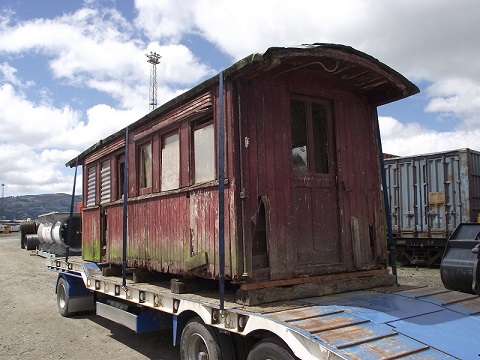
The first half of gumdigger carriage A255 in transit at Dunedin in December 2014. Photo: Clark McCarthy.
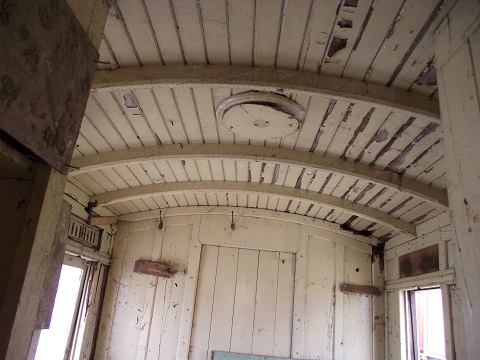
The first half of gumdigger carriage A255 in transit at Dunedin in December 2014. Photo: Clark McCarthy.
Back to top
Replanting Maymorn with native shrubs and trees
Bart and Graeme have done a wonderful job tending to the native shrubs and trees planted at our Maymorn site. A host of native shrubs and trees have been planted alongside our future mainline formation to the Kaitoke side of the pedestrian crossing. The plants have taken despite the arduous ground conditions and occasional accidental dose of weedspray — a vast improvement over the gorse and blackberry the previously occupied the area.
Flax and trees have been planted along either side of the driveway as well, again in some pretty tough growing conditions. We're grateful for the work that has gone into these plantings - keep up the good work!
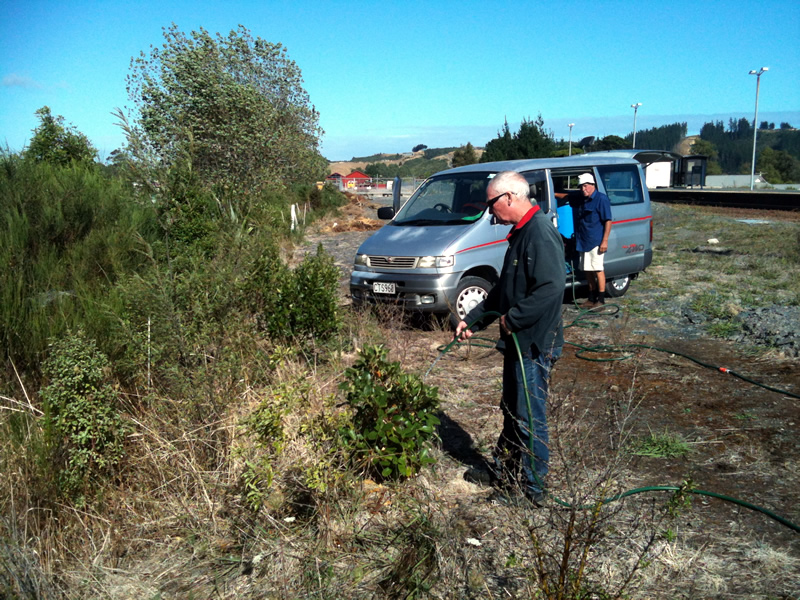
Bart and Graeme watering native shrubs planted at Maymorn on 7 March 2015. Water is carried to the trees in 200L drums stowed in the van, with a small petrol-powered pump boosting the water pressure. Photo: Hugh McCracken
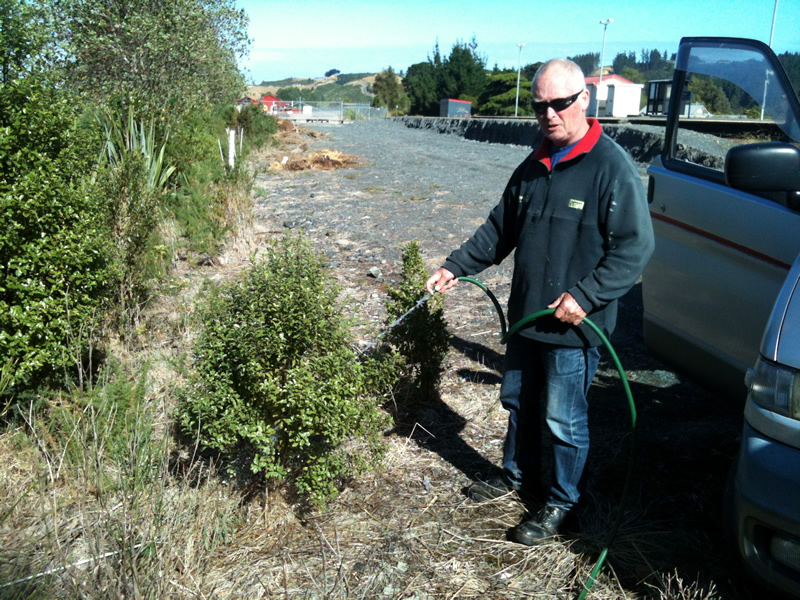
A Pittosporum getting the treatment for summer drought - alongside our future mainline track alignment. Photo: Hugh McCracken
Back to top
Track extended past gate
On 7 February 2015 we extended our mainline track past the gate towards Maymorn station. Just a short distance, but great to be heading "up the hill" with the track again.
A few tasks had to be completed in the preceding weeks, including excavating and installing a field-drain to take surface water away from the pedestrian crossing area, rails cut and drilled, sleepers adzed and pre-bored. Further extension of approximately 100m is pending removal of hard fill from the future loop formation (destined for back-filling the workshop foundation and further track would block truck access to the site).
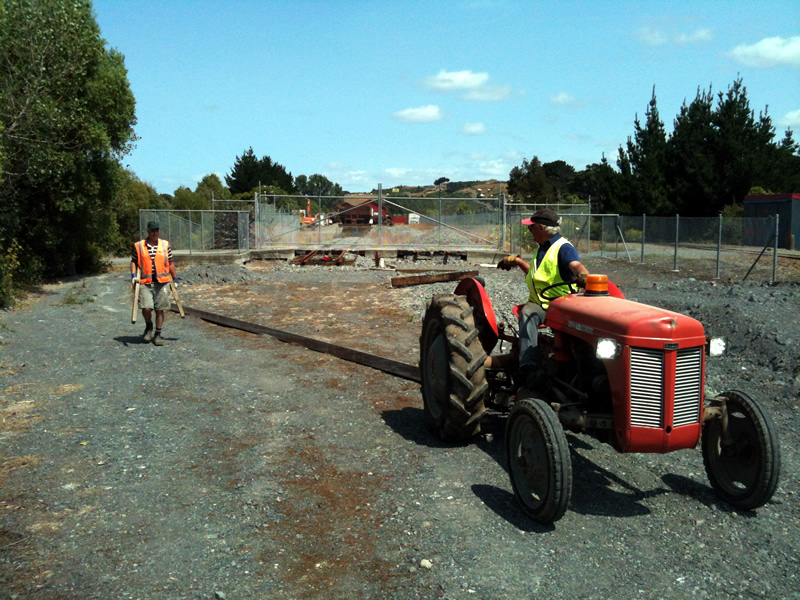
Glenn and John prepare to drag the rail down the formation to join on to existing track. Photo: Hugh McCracken
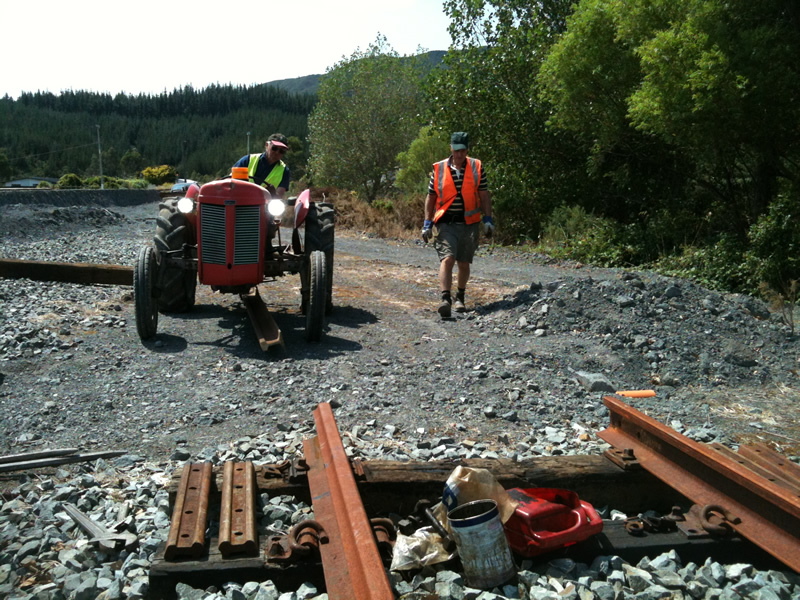
Length of 50kg rail slowly brought into position. Photo: Hugh McCracken
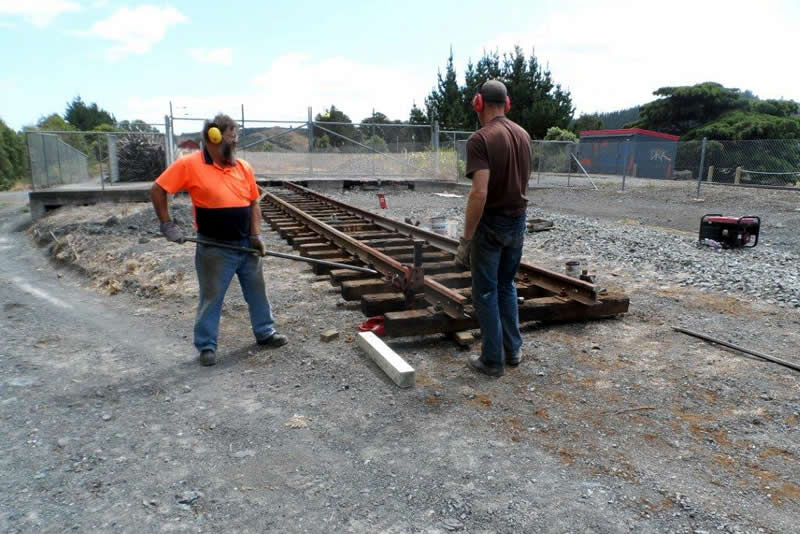
Ray and Hugh bring track to level after fitting sleepers. Photo: Glenn Fitzgerald.
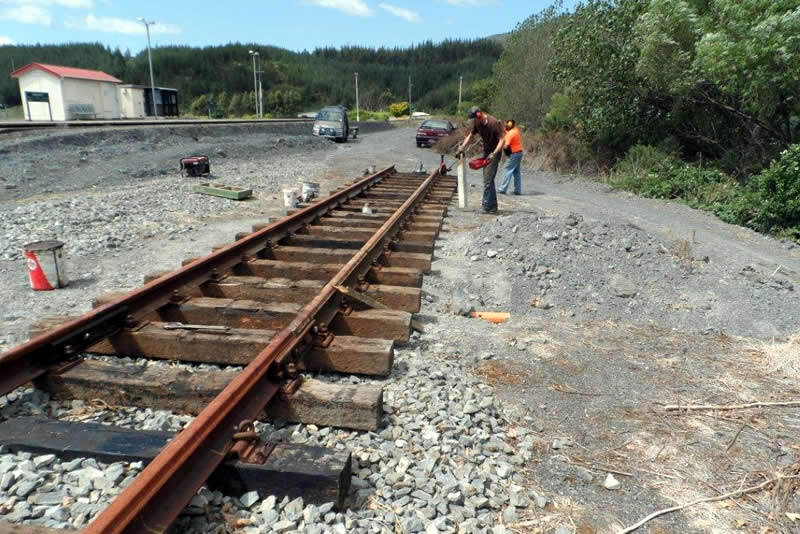
View of the track being assembled past the gate on 7 February 2015, almost parallel with the Wairarapa Line station building and platform. Photo: Glenn Fitzgerald.
Back to top
Promotions
Since the last newsletter we have had displays at a couple of Upper Hutt based events, which have proved to be a brilliant way to promote the Trust's mission, progress at Maymorn and our operating days. We've also had a sausage-sizzle fundraiser at Mega Mitre-10 Upper Hutt, the funds raised put towards a cherry-picker hire for the workshop.
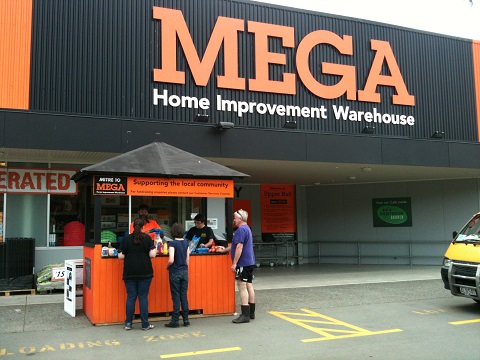
Trust fundraiser at Mega Mitre 10, Upper Hutt on 23 November 2014. Photo: Hugh McCracken
Back to top
Trust display at RailEx
The rebuild of Baldwin steam locomotive Wb 299 is now well under way. The first major components - cab and bunker side were fabricated in time for display at RailEx. A cab seat and raised section of cab floor were added to make a more interesting exhibit, which proved quite popular with visitors.
A number of original components were located from the store of parts, cleaned up and fitted to the new sheets, and all steel work blasted and primed. Finishing coats of black enamel were applied to the exterior, and green enamel to the interior. A replica number plate completed the display and neatly identified the lot as Wb 299.
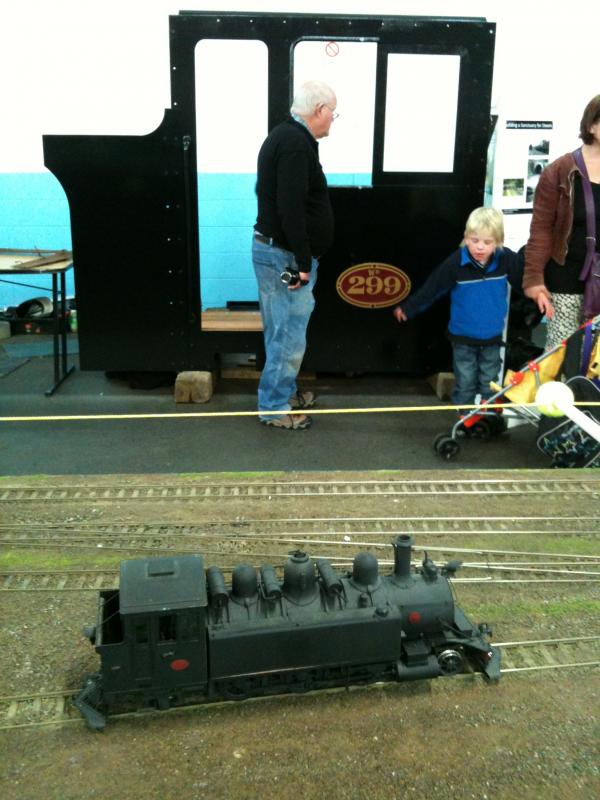
Miniature meets full-size at RailEx - a 1:34 scale model of Wb 299 owned by Brent Hopely provided an interesting counterpoint to the 1:1 display.
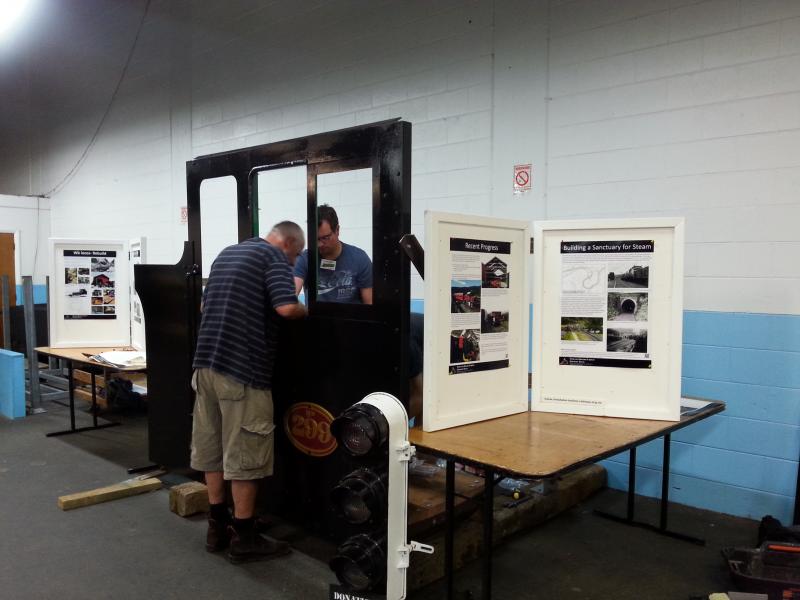
Trust volunteers assembling 299's cab and bunker at RailEx on 14 November 2014.
Back to top
Trust display at Upper Hutt Summer Carnival
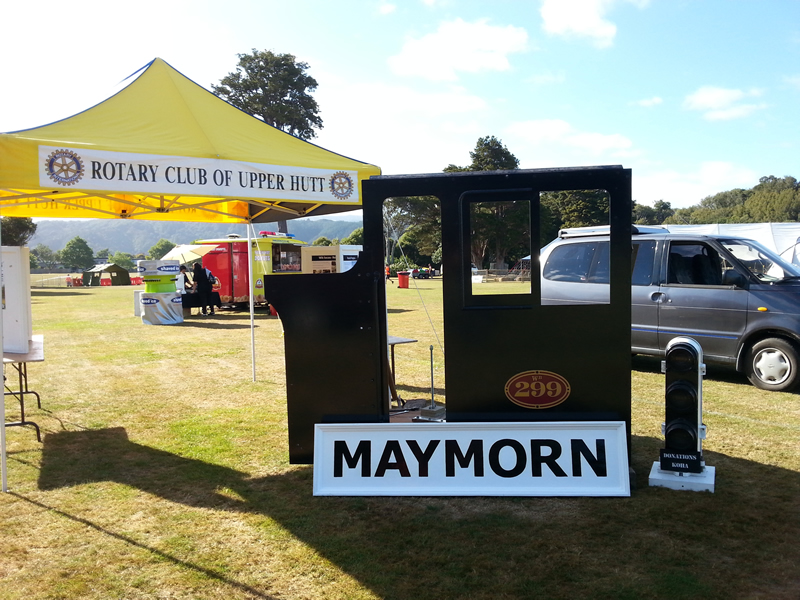
Cab and bunker side of steam loco Wb 299 prominent in public display. Photo: Ben Calcott.
A brilliantly fine day at Trentham Memorial Park for the 2015 Upper Hutt Summer Carnival - a great venue for the Trust to promote its activities and operating days. Prominent in the display was the cab and bunker side of steam loco Wb 299, which proved popular with the public. As earlier published in Wb 299 rebuild under way the cab is an interactive exhibit, folk are free to try out the driver's seat and glance out the cab window - and get a sense of the scale and heritage of the loco.
We also displayed posters with photographs and information on the old Rimutaka Incline route, along with some of the Trust's recent achievements.
Thanks are due to the Rotary Club of Upper Hutt and the Upper Hutt Summer Carnival committee - both of which have been great supporters of the railway.
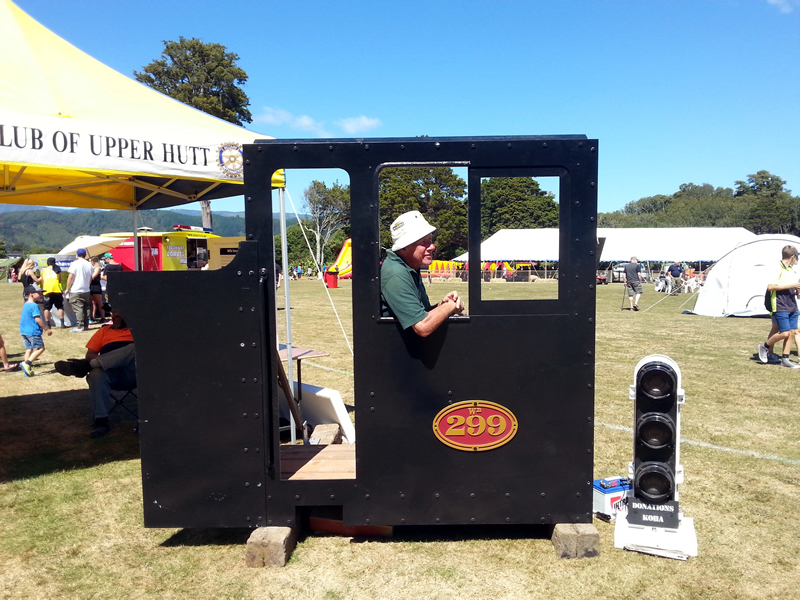
WGB tries out the driver's seat of steam loco Wb 299. Photo: Ben Calcott.
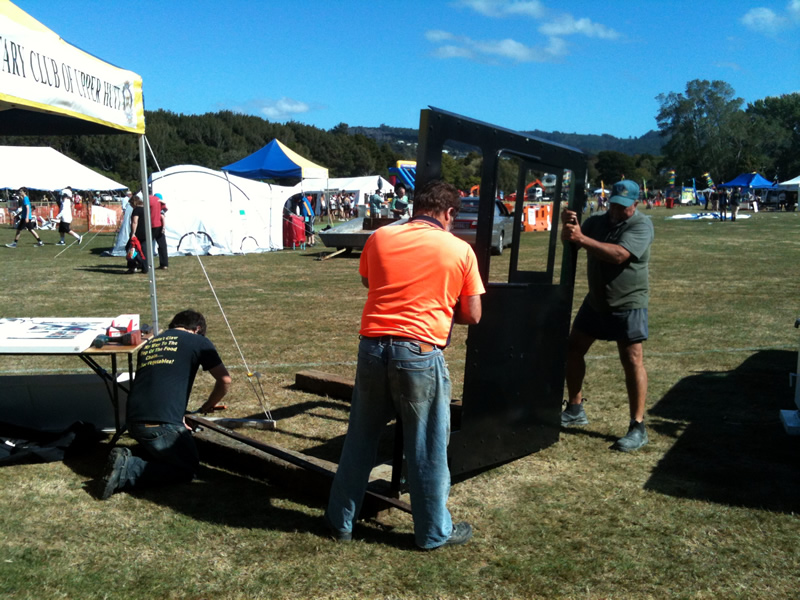
Trust members dismantling the cab side and bunker at the end of the carnival on 28 February. Photo: Hugh McCracken.
Back to top
Work in progress: Rail vehicle shed
We are grateful for recent funding granted by Wellington Community Trust and The Lion Foundation - which have been a significant boost for our workshop project.
We are delighted with the recent round of funding support, which adds to that previously received from Rimutaka Trust, Pelorus Trust, Rotary Club of Upper Hutt, Upper Hutt Summer Carnival, The Lion Foundation and Trust members.
Earthworks for workshop and track extension
A 12-tonne excavator and dump truck were hard at work at Maymorn on Monday 12 January, excavating and moving spoil from the north end of our station to backfill the foundations of our workshop. The formation for our forthcoming track extension was widened and tidied up as well - with additional space cleared alongside the loop formation and a cross-drain put in.
Around 50 cubic metres of good quality base course was moved into the workshop formation, as the photos below show. Over the next week or two this was spread and compacted in preparation for the concrete floor.
A big shout-out to Peter O'Flaherty Contractors for helping the Trust out with the day's earthmoving.
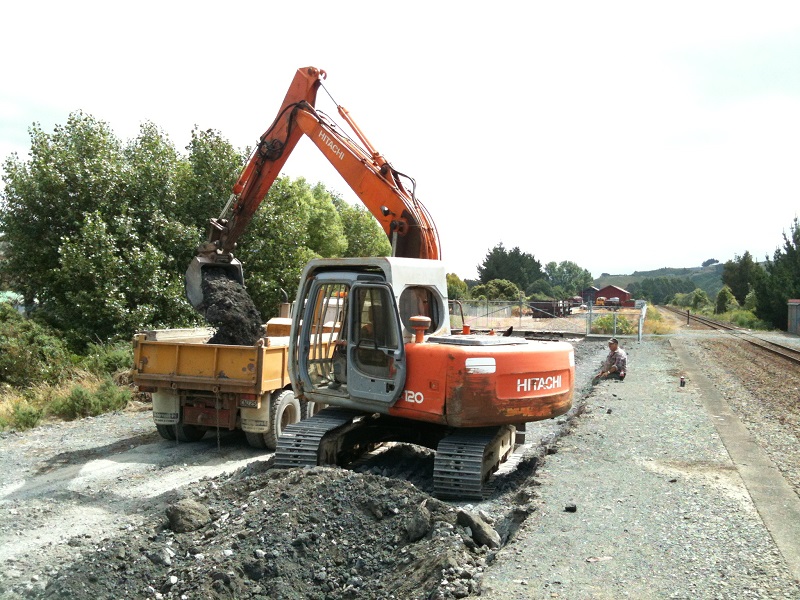
Spoil cleared from north end of our station yard on 12 January 2015. Photo: Hugh McCracken.
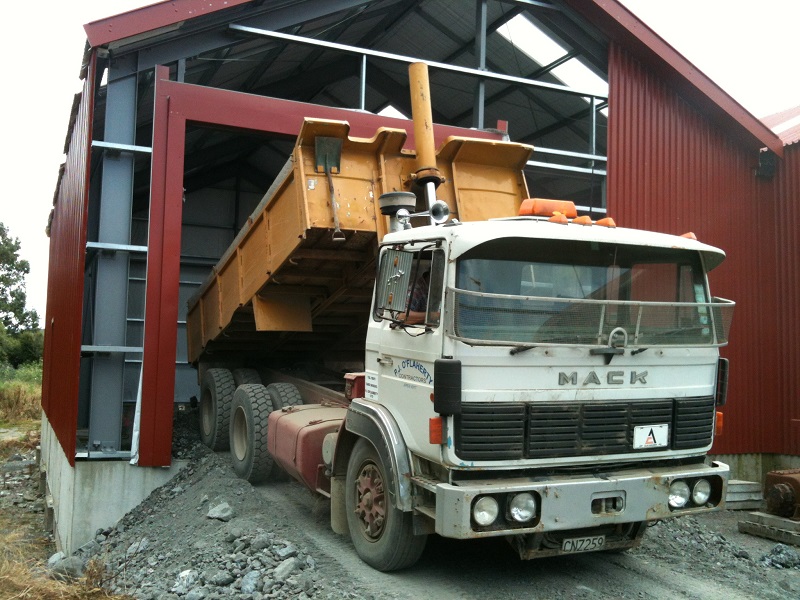
Another truck load of hard fill dumped into the workshop foundations through the train door frame. Photo: Hugh McCracken.
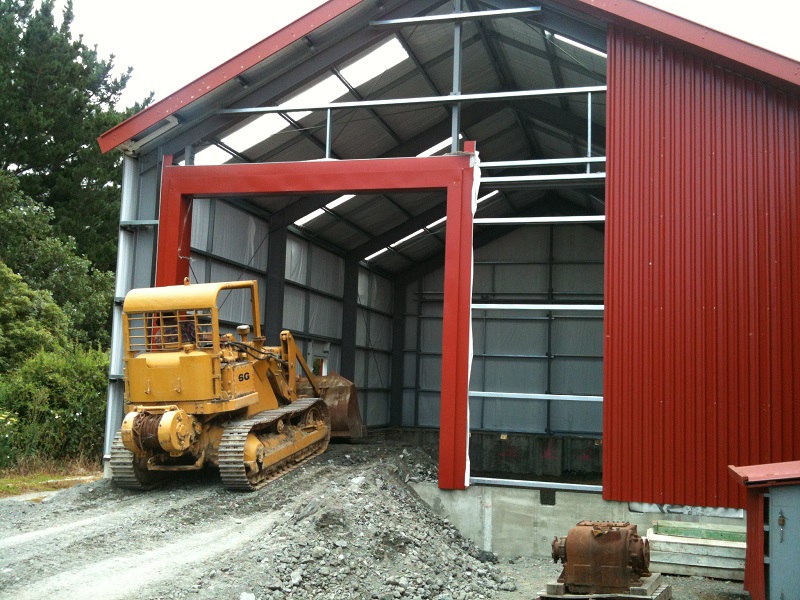
An earth ramp was graded up and across the foundation wall, and successive loads pushed down into the foundation area. Notice also the progress made with train door flashings and wall cladding in these photos. Photo: Hugh McCracken.
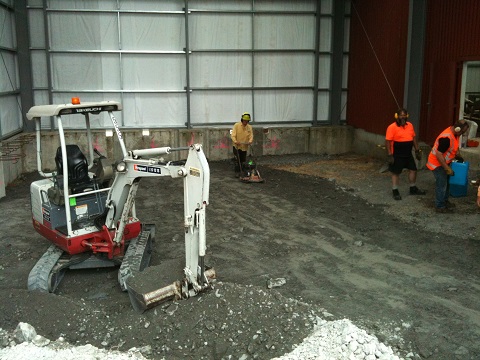
Compacting fill into the workshop foundations over weekend 17-18 January 2015. Photo: Hugh McCracken.
Foundation and cladding progress
On Saturday 29th November we passed another milestone with our workshop shed construction - completing the foundation wall. A few weeks of preparing formwork had paid off with a single building inspection and pour, a central column pod included in the job.
We also completed five small sections of floor slabs inside the main shed, along with a short length of inspection pit floor and a support wall.
Work can now proceed on backfilling the workshop floor area and preparing rail beams and slabs for inspection and concrete placement.
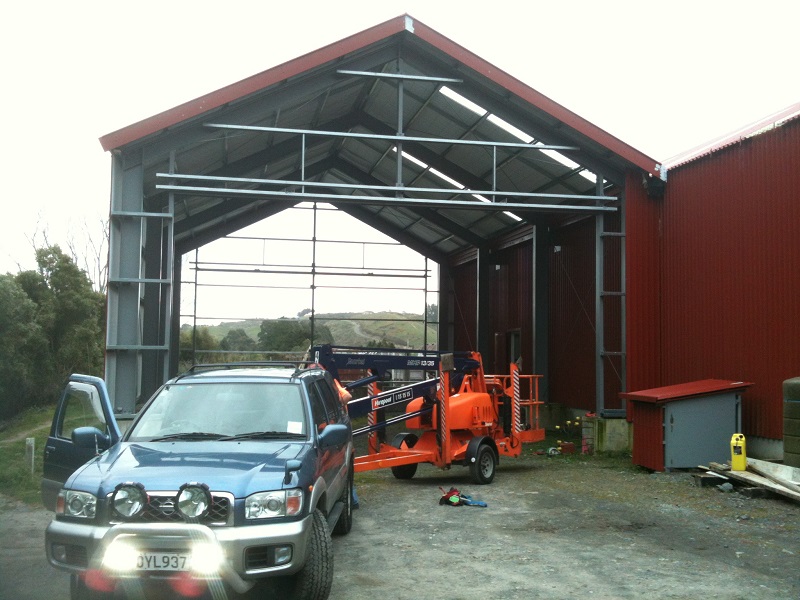
Over the weekend of 4-5 October we completed the roof, by installing barge boards at both the Upper Hutt and Kaitoke ends, along with flashings. Cherrypicker was on its way back to Hirepool.
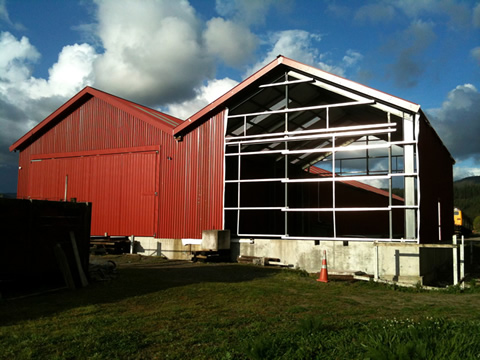
By mid-October we had all wall girts fitted on the Upper Hutt end of the workshop and had made a good start on the wall cladding.
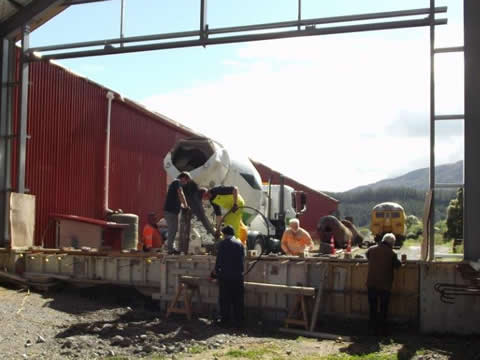
Placing concrete into formwork for foundation end wall on 29 November 2014.
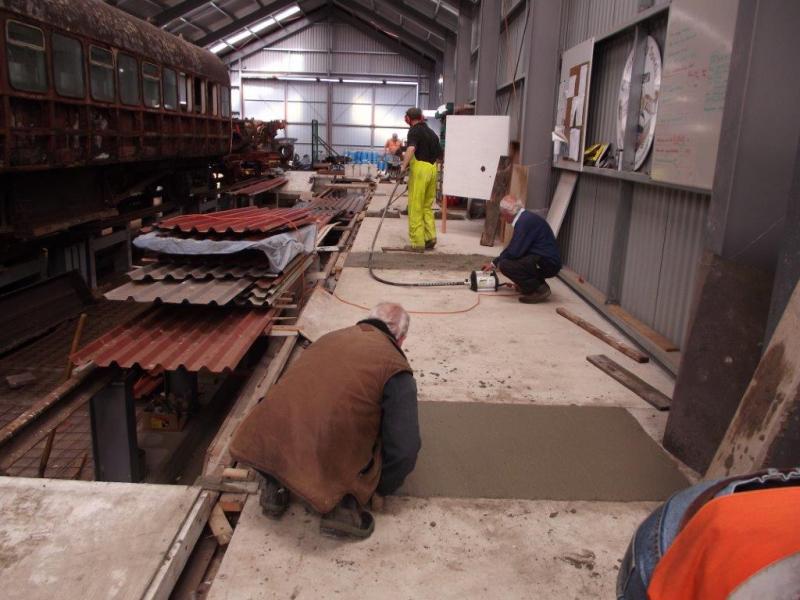
Small floor slabs getting the treatment inside the shed. Brilliant to have completed these areas and get a long length of floor finished.
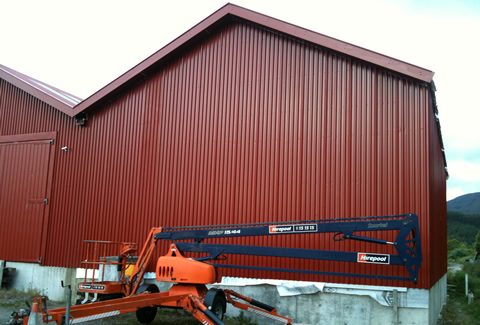
Over the weekend of 5-6 December 2014 we fitted all wall cladding to the Upper Hutt end of the workshop.
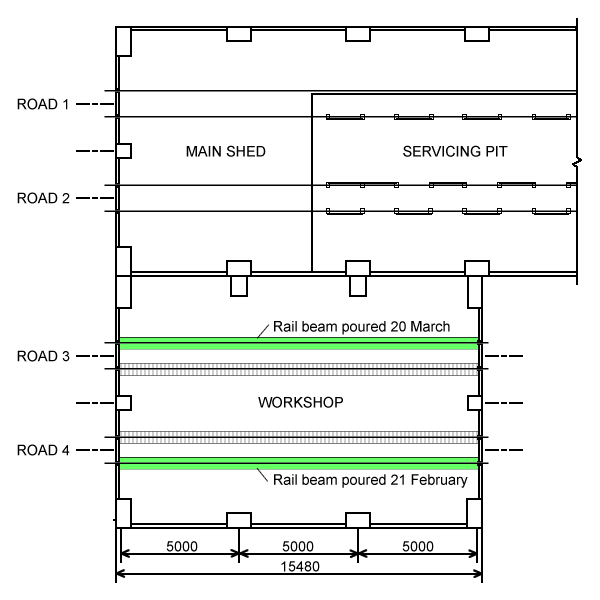
Plan of workshop and a section of the adjacent rail vehicle shed, showing the arrangement of rail beams and concrete flooring. We're making provision for setting rails into the floor on road three at some future date — but we're not fitting a train door at this stage.
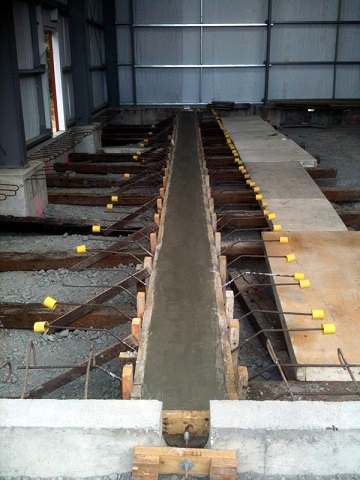
Concrete placed into first rail beam on 20 February, seen here the following day.
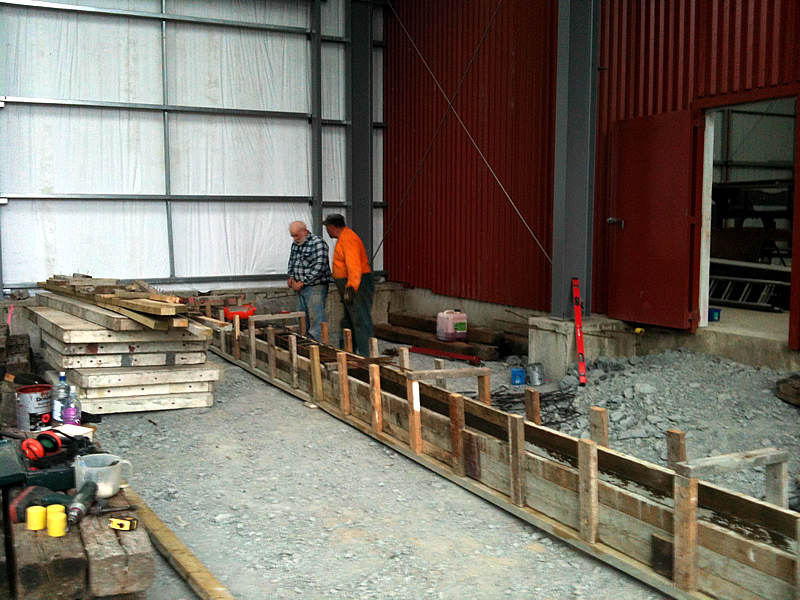
Steve and Colin building formwork for next rail beam on 7 March.
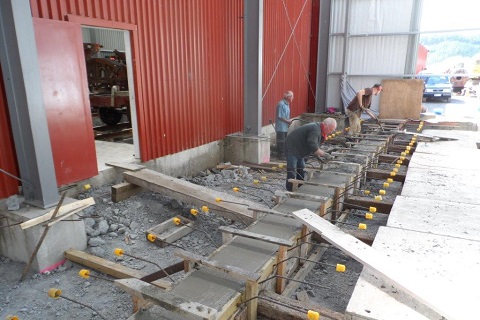
Pouring concrete for the rail beam on 20 March, showing Bart, Graeme and Hugh finishing concrete into position. Photo: Glenn Fitzgerald
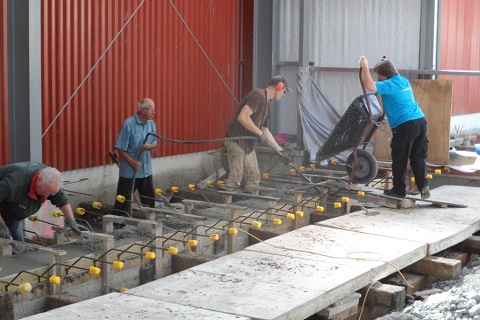
Iain delivers another barrow-load of concrete delivered from the truck. Photo: Glenn Fitzgerald
Late news — workshop cladding finished
During the last two weekends of March we worked hard to complete the bulk of the wall cladding on the Kaitoke end of the building. We've now clad in around the train door through to the side wall, and completed the flashings.
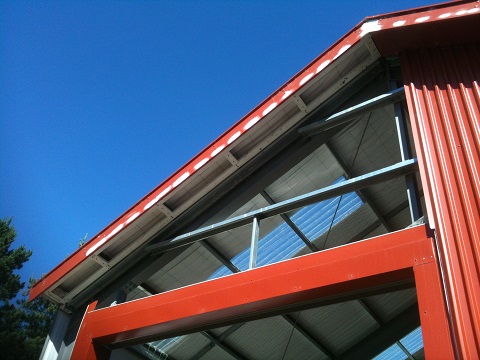
On Saturday 21 March we closed in the Kaitoke end wall of the workshop — detail of the barge boards, soffit and wall framing above the train door. Photo: Hugh McCracken
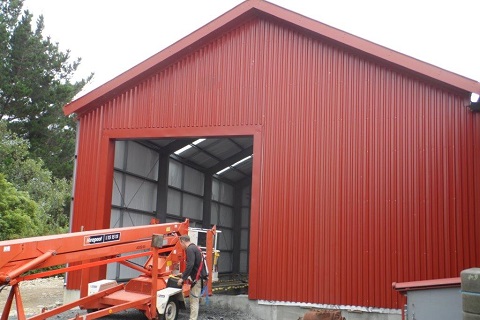
On Sunday 22 March we closed in the remaining sheets to the left of the train door. Photo: Glenn Fitzgerald
Next tasks…
We'll be moving ahead pretty quickly with the concrete rail beams and backfilling, and will then move on to sections of concrete floor. We have set ourselves some pretty tight timeframes to complete this work — we're keen to see the workshop completed this year.
There's a few finsihing tasks to complete with the wall cladding, particularly where it meets the soffit and gutter areas. Rainheads and downpipes also need to be fabricated and fitted. The single train door will take a lot of time and effort to fabricate, assemble and fit to the door frame. A pedestrian door is also needed on the Parkes Line Road side of the building.
Thanks to all who have helped with the workshop building, much appreciated.
Project: Rail vehicle shed
Back to top
Rail vehicle update
Tr189: Our Hillside Tr shunting tractor has been doing great service the past few months running our regular open days. A number of minor tasks have been completed and all the work done seems to be bedding in.
Yc 825: Work is being undertaken to fit a replacement discharge control lever to this Yc. It is hoped that this will be completed in the next few weeks to allow us to use it while ballasting the yard.
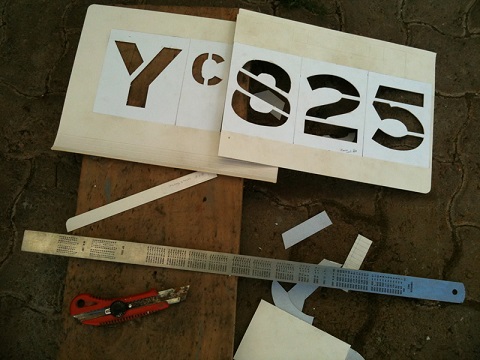
Stensil made for Yc825, with letters and numbers from the Easttown font set, derived from historical photos of wagons having been sign-written at the former Wanganui-located railway workshops. Yc class wagons were built at Easttown in substantial numbers through the late 1950s to early 1960s.
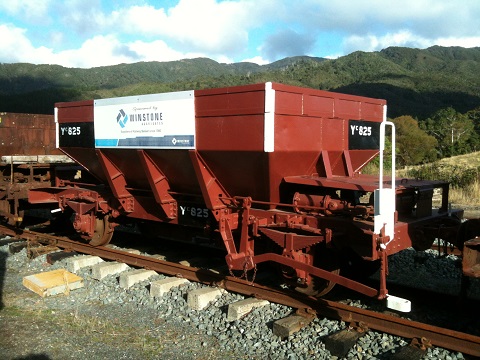
Yc825 sign-written using the stensil, standing on the turntable road at Maymorn on 18 March 2015. Tare weights yet to add! Photos: Hugh McCracken
A1896: Work has been progressing on this car with much of one side stripped down for assessment and repairs. The years stored in the open have deteriorated some of the framing which will require replacement with new timber. The Trust plans on registering this carriage with the Heritage Technical Committee which means that the work completed will be to a standard that will allow future mainline operation if required. Registration with the Heritage Technical Committee will require some changes to the conservation plan that has already been prepared for this carriage but with the amount of work required we believe that it is worthwhile registering the carriage early to prevent future rework.
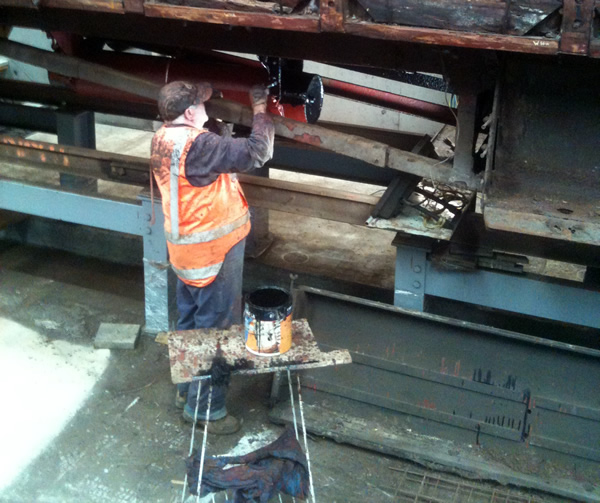
Ron Jones painting underframe of A 1896 in February 2015. Photo: Hugh McCracken.
Tools: We have had a number of tools donated to the Trust and it has been greatly appreciated. We are still looking for hand tools including spanners and screw drivers, power tools, machine tools etc. so if you have anything suitable that you would be willing to donate to the Trust please contact us or drop in during our regular Saturday work days.
Assistance: Our rail vehicles are restored by people from all walks of life with all manner of skills, from people with an engineering background to those who just like 'trains'. If you know how a paintbrush works or how to operate a lathe then we have jobs for you. If you are interested in volunteering out please contact the Trust or pop in during our regular Saturday work days.
Back to top














































